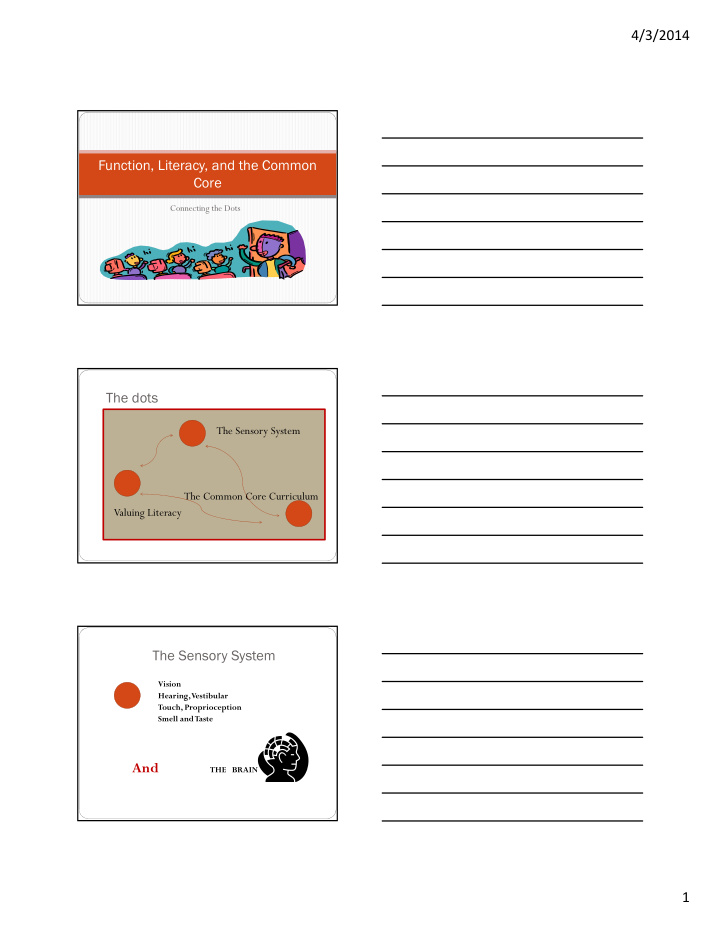



4/3/2014 Function, Literacy, and the Common Core Connecting the Dots The dots The Sensory System The Common Core Curriculum Valuing Literacy The Sensory System Vision Hearing, Vestibular Touch, Proprioception Smell and Taste And THE BRAIN 1
4/3/2014 Factors to consider with the “system”… Consider CONNECTIVITY Its DYNAMIC nature The place of MEMORY Information-gathering Critical thinking and problem solving FATIGUE – sensory organs, neural system And the conditions affecting function…. Poverty Stress Fear (e.g., of failure) Family dynamics The Time Factor Place Opportunity The Physical environment The organizational nature of movement Assess the FUNCTIONAL…. Vision –TVIs usually assess functional as part of their routine assessment Hearing –Teachers of the D/HH sometimes assess this to better understand what an IEP should contain Touch – Functional aspects touched upon by therapists – but sometimes not noted down to share with others Smell/taste – Often connected with the emotional and associations Proprioception – knowing one’s whereabouts in relation to space Vestibular –This sense functions closely with the others….. 2
4/3/2014 Literacy IS IS functional Social Functions (see page 3 of handout) Never in a vacuum – always has a CONTEXT May not be what we think of as FORMAL We think “intellectual” – but need to also think “emotional”, “personal” Literacy as a communication TOOL, not a mysterious art/science The Common Core Curriculum oThe connector: UNIVERSAL DESIGN FOR LEARNING Universal Design for Learning The principles: WHAT HOW WHY The framework: ACCESS Ultimate goal: LEARNING EXPERIENCE – IMPROVE QUALITY OF LIFE Key points: Not just knowledge and skill, but PURPOSEFUL Reduce barriers 3
4/3/2014 Doing the math… A set or sub-set of the CCS curriculum + UDL = ? Example 1: Identify characters, settings, and major events in a story ( WHAT ) (Print, braille, other) Provide access ( HOW ): (a) Use props, including 3-D ones, to go with the story; Use braille/large print (b) Repeat, repeat, repeat; (c) PAUSE for feedback from the child Engage the child’s brain, memory – and connections to the real world. Motivate the child’s participation ( WHY ) 4
Recommend
More recommend